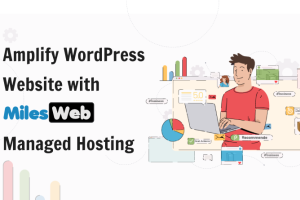Search indexing is the process of making sure that Google knows your website exists and will be able to match up webpages with the keywords in search queries.
Whereas on-page SEO shows Google where on your site to place each piece of content, search engine optimization (SEO) is all about entering relevant keywords into your content to help it appear in the search results.
10 Quick & Easy Ways to Index Your Website on Google
(1) Optimize Your Website’s Page Load Speed
Page load speed is a very important factor for search engine optimization. A slow-loading website can cause your visitors to leave, resulting in lost revenue and frustrated clients.
There are several ways to test page load speed:
Use Google’s Page Speed Test tool to see how fast your site loads on different devices (PCs, tablets and phones). Click here for more details on how it works.
Use Pingdom’s Website Speed Test as an alternative option if you don’t have access or want something simpler than Google’s tool (and free!). Just enter the URL of your site in the box below and click Go! There are also other tools available based on which one suits best according to your needs.
(2) Make Your Website Mobile-Friendly
Making your website mobile-friendly is important because it will help with search engine indexation.
A good rule of thumb is to make something completely different for every device you have, no matter how small or large that device might be.
If a visitor can’t find what they’re looking for on a mobile device, then it’s going to be hard for them to navigate around your site and find out about any other content on offer (or even just leave).
You’ll need some HTML5 CSS code if you want the best results from Googlebot’s crawlers:
(3) Meta Tags Are Important For SEO
Meta tags are used to tell search engines what your website is about. They’re also important for SEO, but they aren’t a ranking factor. When you create meta tags, it helps search engines understand what your site is about and how users can find it.
Meta description: In addition to providing an SEO boost by helping people find your website
when they search for keywords related to what you offer, meta descriptions give Google an idea of what kind of content will be available on each web page so that
if someone searches for something specific like “dog training tips”, then those pages with relevant information will show up higher in search results compared with others with similar titles but less text associated with them.”
(4) Focus On Mobile-First Indexing
The concept of mobile-first indexation is also known as “mobile-only indexing”. It means that Google will first index the mobile version of your website, and then it will process your desktop version after that.
If you don’t have a mobile website, but want to improve search engine visibility in general, we recommend that you create one now. You can use tools like Google Search Console or Bing Webmaster Tools to easily do this task for free!
(5) Improve Your Local SEO With Structured Data
What is Structured Data?
Structured data, or Schema.org markup, allows you to add structured data to your website.
This can be used in the form of a microdata file that contains additional information about your product or service, such as its name, price, ingredients and other information that would be useful for search engines but not necessarily human viewers.
Structured data is especially useful for improving the local SEO because it helps search engines understand what a business does and where it’s located so they can provide relevant results when someone searches for businesses nearby (more on this below).
How To Use It?
Structured data allows you to add annotations onto pages using schema.org markup (which we’ll discuss later).
These annotations will appear in the SERPs as green boxes next to listings when users visit them via desktop browsers or mobile devices with Google Chrome installed on them – which means every time someone clicks through from one page within your site onto another page within said same website structure.
(6) Improve Your Chances of Showing Up in Google Featured Snippets
Google Featured Snippets are a great way for your website to get more exposure.
They’re usually shown at the top of the search results and include links to your site in addition to serving as an opportunity for users who are searching for that keyword phrase, or related terms, to click through and learn more about what you have to offer.
To improve your chances of showing up in these featured snippets, make sure that:
You create content that answers the question being asked by users when they search for something specific; for example, “how do I make my website mobile-friendly?” or “what is SEO?”.
(7) Create a Sitemap to Simplify Site Crawling
A sitemap is a list of all the pages on your website. It provides a map of your website to search engines, which helps them find, index and crawl it. A good sitemap should be created by using web crawlers that can find errors in the code or broken links on your site.
A well-maintained sitemap will help search engines navigate through the content on your website more easily, resulting in better indexation results for you.
(8) Create content that is engaging and useful to users
Promote your content through social media channels like Facebook, Twitter or LinkedIn. This is one of the best ways of getting traffic from those platforms without having to pay any money!
Use Anchor Texts, Links & Content Relevant To The Article You Want To Rank
You can use anchor texts, links and content relevant to the article you want to rank.
Anchor text is clickable text in a hyperlink. It usually appears in blue color and tells people what they are clicking on when they click on it.
Anchor texts help search engines understand what content should be indexed by them, so they can find your site more easily by doing a search query related to your domain name (e.g., [company name].com).
As an example: if someone searches for “best websites of 2013″, then Google will find all websites that have been written about or reviewed in 2013 because those sites would have had an article with keywords like “best” and “websites”.
If you have written about any one of those topics (e.g., best website), then Google knows that this topic is important enough for its users’ needs too; thus making sure that other users don’t miss out on valuable information from yours!
(9) Get Organic Backlinks From High Authority Websites In Your Niche
Link building is the most important aspect of SEO. It can be done through guest posting, resource page links and other methods.
Backlinks from high authority websites are the best kind of backlinks because they help you rank higher in Google.
(10) Utilize Social Media Then, Link To Your Site
Social media is a great way to get your website indexed. You can also use social media to promote your site and get traffic.
Social media is a great way to link back to your website, but make sure that you do so in a way that encourages users or followers of the platform like Facebook or Twitter to visit it.
If you want more clicks on those links, try using images instead of text-only links so they’re easier for people scrolling through their newsfeeds (or whatever other social network they may be using) not only at home
where they’re sitting down with nothing else going on but also when they’re out shopping or doing other activities where there aren’t many distractions available from any electronics attached at all – including cell phones!
Conclusion
Now that you know what search engine optimization is, you are ready to implement and test these methods.
Remember, it is important to do so in a way that helps improve your website’s user experience.
There are many other factors that can affect your site’s ranking in searches like Google and Bing, but with these basics under your belt, you will be well on your way!














